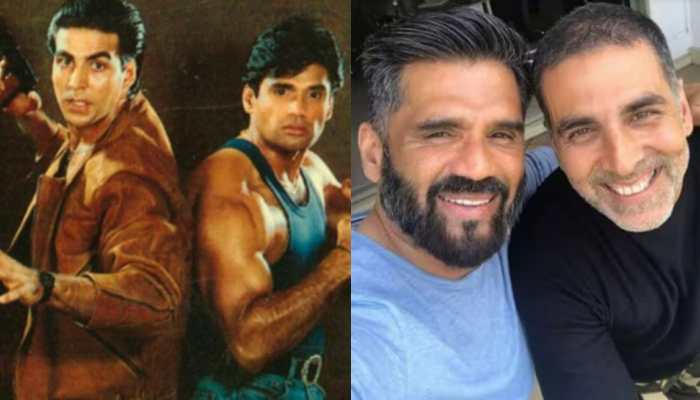When it all started: India`s first Test series win in England
The odds of India winning a Test match, let alone a series in England, were fairly negative in 1971 but it was the strongest Indian side ever to tour England at that time.
Trending Photos
)
 Feroz Khan
The “Dad`s Army” of 1971 had just returned from an acrimonious yet successful Ashes campaign in Australia. The team became the first ever touring party to have returned undefeated from Australia, winning two Test matches out of seven and in the process, regaining the Ashes.
Almost at the same time in West Indies, history was being written when a “Professor`s” army from the subcontinent was to script their first ever Test series win there and thereby announcing their arrival among the elites of the game.
What connects these two armies apart from history is that the two were to face each other in the cricket field in the former’s backyard in the latter half of 1971.
The Dad`s Army was on an undefeated 26 Test match streak and had completely outplayed the party from the subcontinent on previous occasions winning 11 of 12 Test matches played on their home turf.
However, the scenario at this moment was quite different from previous occasions.
The Professor`s Army or simply, the Indian cricket team, had just tasted success over their only opponent they had yet to register a win against and were obviously, upbeat, brimming with confidence but being cautious at the same time.
Even though the odds of India winning a Test match, let alone a series in England, were fairly negative but given their last performance combined with a formidable spin bowling attack made them stronger than any previous Indian teams that had toured England before.
The strength of their spin bowling attack could be gauged by the fact that Erapalli Prasanna, regarded by many as the best off-spinner ever, had to warm the benches since Venkatraghavan; also an off-spinner, was preferred due to his superior batting skills.
Even though there weren’t any extraordinary performances from the Indian batsmen, still captain Ajit Wadekar and Sunil Gavaskar managed to score in excess of 1000 runs. Gundappa Viswanath had scored heavily during the West Indies series scoring three centuries, but he failed to emulate this feat against England.
Dilip Sardesai also failed to continue with his form the West Indies tour even though his 55 runs in the third Test against Illingworth`s fine spell of spin bowling gave a hint of a late but crucial return to previous outline.
The series was marred by rain and snow storm, and was a party to England`s vicious bowling attack led by John Snow and Norman Clifford, that prevented India from winning the first Test where they fell short by 38 runs.
The series is also remembered for the Snow-Gavaskar incident when Gavaskar, while attempting a quick single, barged into Snow, that landed him on the ground in the first Test match. This led to criticism of John Snow from all corners infuriating the selectors to a level that led to his exclusion from the rest of the series. However, he was called back for the third Test when John Price failed the fitness Test.
In the second Test, India were struggling in their second innings chasing 420 runs, reduced to 65/3 when rain came to their rescue, washing the entire fifth day after lunch leading to the match being drawn.
The finest moment of the series came during the third and final Test when Abid Ali cut Luckhurst for a boundary while India were chasing a stiff target of 173 runs in their second innings and thus registered their first ever Test and a series victory on English soil.
The Indian spin quartet or the “Four Musketeers” that included Bishan Singh Bedi, B Chandrasekhar, E Prasanna and S Venkataraghavan were the main reason behind one of the finest hour of Indian cricket. They knitted an intricate web of spin bowling around the English batsmen which they were unable to unravel during the entire series.
With a back to back away series win against West Indies and England, Ajit Wadekar proved his leadership skills, becoming the first ever Indian captain to do so.
Overall it was a fine and distinguished performance from the Indian squad that lost only one match and won seven on the tour.
The series was one of the stepping stones for the Indian team in their quest to break the tag of minnows and join among the top ranks of cricketing nations.
Thus the date of 24 August 1971 was etched firmly in the history of Indian cricket as the day when the hunters became the hunted, when India conquered their former colonial rulers in their own game.
Feroz Khan
The “Dad`s Army” of 1971 had just returned from an acrimonious yet successful Ashes campaign in Australia. The team became the first ever touring party to have returned undefeated from Australia, winning two Test matches out of seven and in the process, regaining the Ashes.
Almost at the same time in West Indies, history was being written when a “Professor`s” army from the subcontinent was to script their first ever Test series win there and thereby announcing their arrival among the elites of the game.
What connects these two armies apart from history is that the two were to face each other in the cricket field in the former’s backyard in the latter half of 1971.
The Dad`s Army was on an undefeated 26 Test match streak and had completely outplayed the party from the subcontinent on previous occasions winning 11 of 12 Test matches played on their home turf.
However, the scenario at this moment was quite different from previous occasions.
The Professor`s Army or simply, the Indian cricket team, had just tasted success over their only opponent they had yet to register a win against and were obviously, upbeat, brimming with confidence but being cautious at the same time.
Even though the odds of India winning a Test match, let alone a series in England, were fairly negative but given their last performance combined with a formidable spin bowling attack made them stronger than any previous Indian teams that had toured England before.
The strength of their spin bowling attack could be gauged by the fact that Erapalli Prasanna, regarded by many as the best off-spinner ever, had to warm the benches since Venkatraghavan; also an off-spinner, was preferred due to his superior batting skills.
Even though there weren’t any extraordinary performances from the Indian batsmen, still captain Ajit Wadekar and Sunil Gavaskar managed to score in excess of 1000 runs. Gundappa Viswanath had scored heavily during the West Indies series scoring three centuries, but he failed to emulate this feat against England.
Dilip Sardesai also failed to continue with his form the West Indies tour even though his 55 runs in the third Test against Illingworth`s fine spell of spin bowling gave a hint of a late but crucial return to previous outline.
The series was marred by rain and snow storm, and was a party to England`s vicious bowling attack led by John Snow and Norman Clifford, that prevented India from winning the first Test where they fell short by 38 runs.
The series is also remembered for the Snow-Gavaskar incident when Gavaskar, while attempting a quick single, barged into Snow, that landed him on the ground in the first Test match. This led to criticism of John Snow from all corners infuriating the selectors to a level that led to his exclusion from the rest of the series. However, he was called back for the third Test when John Price failed the fitness Test.
In the second Test, India were struggling in their second innings chasing 420 runs, reduced to 65/3 when rain came to their rescue, washing the entire fifth day after lunch leading to the match being drawn.
The finest moment of the series came during the third and final Test when Abid Ali cut Luckhurst for a boundary while India were chasing a stiff target of 173 runs in their second innings and thus registered their first ever Test and a series victory on English soil.
The Indian spin quartet or the “Four Musketeers” that included Bishan Singh Bedi, B Chandrasekhar, E Prasanna and S Venkataraghavan were the main reason behind one of the finest hour of Indian cricket. They knitted an intricate web of spin bowling around the English batsmen which they were unable to unravel during the entire series.
With a back to back away series win against West Indies and England, Ajit Wadekar proved his leadership skills, becoming the first ever Indian captain to do so.
Overall it was a fine and distinguished performance from the Indian squad that lost only one match and won seven on the tour.
The series was one of the stepping stones for the Indian team in their quest to break the tag of minnows and join among the top ranks of cricketing nations.
Thus the date of 24 August 1971 was etched firmly in the history of Indian cricket as the day when the hunters became the hunted, when India conquered their former colonial rulers in their own game.Live Tv







)
)
)
)
)
)
)
)
)
)
